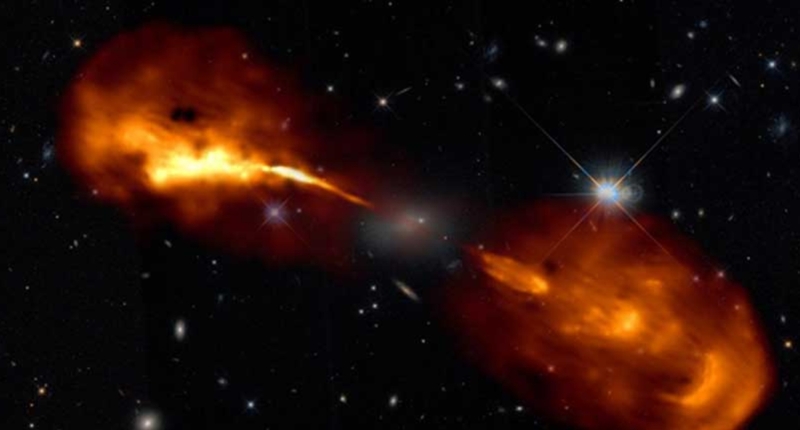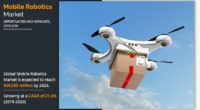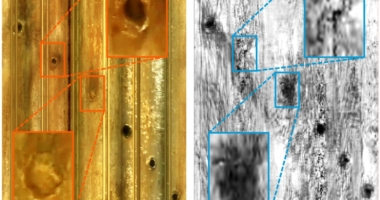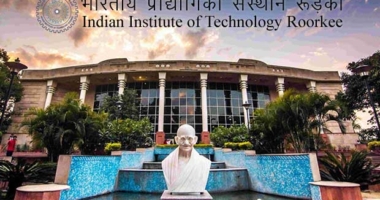In Brazil, space activities are at the forefront of the government’s development agenda, focusing on Earth observation, communication, and meteorology. Brazil is also enhancing infrastructure and training of human resources for space studies. The country has an important aerospace partnership with China, as they work together to expand into satellite exploration, manned spaceflight, and deeper studies in the field. In Israel, advancements in private aerospace innovation have been achieved, with the country increasing its support for the private aerospace industry and providing grants to companies for the development of new space technologies. France is investing in the construction of the internet via satellite and expanding their space industry with a nine billion euro investment from 2023 to 2025. The European Space Agency has a budget of EUR 16.9 billion to continue their programmes on Ariane 6 and Vega launchers, and to participate in the global competition for small launchers. South Korea plans to land on the Moon in 2032 and on Mars in 2045, although some academic circles doubt that the country’s talent pool, budget, and technical level in the aerospace sector can support the expected effort.
New Discoveries and Advances in Space Research
This article focuses on recent discoveries and scientific breakthroughs made in various countries including Japan, Israel, South Korea, and the BRICS countries. One of the most significant advancements is the recent return of gas samples by the Hayabusa 2 probe of the Japan Aerospace Exploration Agency (JAXA) from asteroid 162173 Ryugu.
Hayabusa 2 Mission
Launched on December 3, 2014, the Hayabusa 2 probe reached the asteroid Ryugu’s orbit on June 27, 2018. After surveying the asteroid for a year and a half, the probe approached Earth on November 13, 2019, carrying the samples collected on Ryugu’s surface. On December 6, 2020, the capsule containing the samples collected on the asteroid landed in the Australian desert, while the Hayabusa 2 probe continued its mission by heading into deep space to reach the 1998 KY26 asteroid.
The samples collected from Ryugu’s surface could provide insight into the history of the asteroid, and thus, the solar system’s evolution. The JAXA team detected more than 20 amino acids in the samples, indicating the presence of these organic molecules outside of Earth’s atmosphere. This discovery is significant as it sheds light on how organic molecules arrived on Earth and supports theories that water on Earth was brought by asteroids from the outer edges of the solar system.
Pyrimidine Nitrogen Bases
Scientists at Hokkaido University in Japan discovered that carbon-rich meteorites may have brought essential pyrimidine nitrogen bases to Earth. These nitrogen bases, which make up DNA and RNA, are critical for the genetic function of the first manifestations of life on our planet. The team analyzed three meteorites and found pyrimidine bases, such as cytosine and thymine, in concentrations of parts per billion. This finding suggests that such compounds can be produced by photochemical reactions and may reach Earth via meteorites.
These recent discoveries and advances demonstrate the significant contributions made by various countries to space research. The results of these findings could have significant implications for our understanding of the origins of life on Earth and the evolution of the solar system.
Brazil and China’s Aerospace Cooperation with the BRICS Countries
Brazil is the only country in the Southern hemisphere that has mastered aerospace technology, and the government has placed space activities at the top of its priority development agenda. The Agência Espacial Brasileira focuses mainly on Earth observation, communication, and meteorology research while also strengthening infrastructure construction and training human resources in the field.
The People’s Republic of China is an important aerospace cooperation partner of Brazil. The aerospace departments of China and Brazil are actively implementing the Cooperation Plan 2013-2022 of the National Space Administration of China and of the Brazilian Space Agency, respectively. Both countries continue to expand into satellite exploration and manned spaceflight, including deepening studies in the field. There are plans to build a new cooperation platform in space technology, space applications, space science and ground equipment, personnel training, measurement and control support, as well as launch services.
Recently, the China-Brazil Space Weather Joint Laboratory and the Universidade Federal do Recôncavo da Bahia established tools and equipment for scientific research and implemented data sharing. The collaboration succeeded in bringing the remote city of Santarém (Pará State) onto the map of an international sensor network for space meteorology research. It is also the latest tool in the South American magnetometer network shared between the Chinese Meridian Project and the Estudo e Monitoramento Brasileiro do Clima Espacial (EMBRACE).
On May 25, 2022, the BRICS countries (Brazil-Russia-India-China-South Africa) established the Joint Space Cooperation Committee, which officially opened the joint observation and data sharing of the “constellation” of remote-sensing satellites of these States. The “constellation” consists of six existing satellites from the BRICS countries. Carlos Moura, director of the Agência Espacial Brasileira, said that the creation of a virtual “constellation” of remote-sensing satellites between the space agencies of the BRICS countries and the establishment of a data-sharing mechanism will help address the challenges faced by human beings such as global climate change, major disasters, and environmental protection.
Israel’s Advancements in Private Aerospace and Lunar Satellite Exploration
In Israel, the promotion of lunar satellite exploration and private aerospace innovation has achieved remarkable results. The Israel Innovation Authority announced a grant of six million dollars to eleven private aerospace companies for the development of new space technologies, covering technical fields such as the Internet of Things (IoT) and smart objects. This support for the private aerospace industry is set to continue, with the IIA planning to fund USD 180 million over the next five years.
Israel is also developing the space construction of small satellites, new materials, lunar oxygen production, advanced sensors, and Hall thrusters. Last year, the Israeli defence company Rafael launched a constellation of high-resolution, high-revision satellites. The image resolution is less than 30 cm, and the revision time of the ground-based target is less than 10 minutes. Pictures of the same ground-based target can be continuously taken at intervals of several minutes. The Israeli Ministry of Defence’s Ofek satellite programme, which launched the Ofek-16 satellite in 2020, won the Israel Defence Award 2022.
The non-profit aerospace organization SpaceIL is preparing to launch Israel’s second lunar probe in 2024 or 2025, carrying multiple lunar experimental devices. In late August 2022, the first experimental project was defined, which will test the stability of drugs on the moon under the responsibility of scholars from the Hebrew University of Jerusalem. In October 2022, the Ben-Gurion University of Negev and the Queensland Academy for Science, Mathematics, and Technology (QASMT) created a research group that announced they would use a probe to conduct tests on plant growth on the Moon.
These advancements in private aerospace and lunar satellite exploration demonstrate Israel’s commitment to the development of new space technologies and support for the private aerospace industry.
France Plans to Connect Smartphones to Satellite Communications
France is investing heavily in the construction of the Internet via satellite, with a plan to connect smartphones directly to satellite communications via small groups of satellites around the Earth. The project is designed to provide 5G coverage in areas not covered by terrestrial antennas, thus providing a service that lies between satellite telephone systems and satellite Internet providers such as Starlink. The ambitious project will invest eight billion euros and is a joint venture between French company Thales, US company Qualcomm, and Swedish group Ericsson. Thales will build the satellites, Qualcomm will supply the smartphones, and Ericsson will install the terrestrial core network. This project is set to lead to a shift from competition to cooperation between telecommunications and satellite companies in the field of networks.
France’s Investment in Space
France is also investing significantly in space planning and investment, committing over nine billion euros from 2023 to 2025 for the development and expansion of the space industry. This investment will support the continuation of the European programs on Ariane 6 and Vega launchers, as well as enabling Europe to participate in the global competition for small launchers. The funding will also provide support for Moon and Mars probes to expand cooperation with the United States in Moon and Mars exploration.
The European Space Agency Summit
The European Space Agency (ESA) held a summit in November last year and decided that the budget for the following three years would be EUR 16.9 billion, a 17% increase, but less than the EUR 18.5 billion requested by its Director-General. The funds are mainly provided by Germany, France, and Italy. The new funding allows the EU to participate in the global competition for small launchers and support Moon and Mars probes to expand cooperation with the United States in Moon and Mars exploration.
South Korea’s Second Test Launch of Domestically Produced Nuri Rocket
The Republic of Korea (South Korea) successfully placed several satellites into orbit on Tuesday, marking an important step in the efforts to restart its space program after the failure of an initial test in 2021. The second test launch of the domestically produced Nuri rocket was successful, with the 162.5 kg satellite designed to test the rocket’s performance making contact with a base station in Antarctica after entering orbit.
South Korea’s Fourth Basic Plan for Space Development
The South Korean government released the fourth basic plan for space development on 30 November 2021, proposing five main tasks related to the development of the space industry. These include expanding the scope of space exploration, sending manned spacecraft, developing the South Korean space industry, overseeing and supervising space security issues, and conducting space-related research.
South Korean President Yoon Suk-yeol has announced plans for South Korea to land on the Moon in 2032 and on Mars in 2045. However, some academics have questioned whether the country has the talent, budget, and technical capabilities to achieve these ambitious goals.
Don’t miss interesting posts on Famousbio










